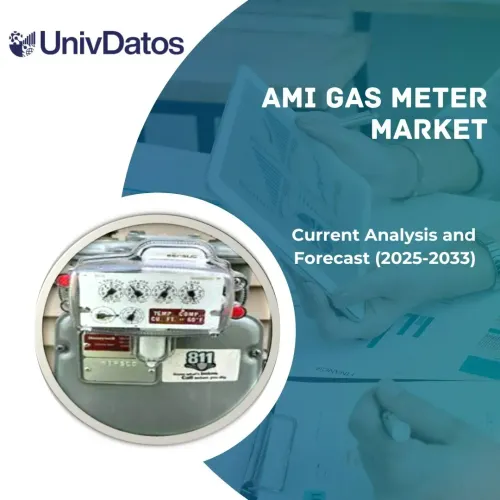- Home
- Chi siamo
- Settore
- Servizi
- Lettura
- Contattaci
Mercato delle microreti in Europa: Analisi attuale e previsioni (2024-2032)
Enfasi sul Componente (Software e Servizi e Hardware); Tipo (AC, DC e Ibrido); Connettività (Connesso alla Rete e Fuori Rete); Fonte di Alimentazione (Cogenerazione, Gas Naturale, Diesel, FV Solare, Celle a Combustibile e Altri); Accumulo (Microrete agli ioni di litio, Piombo-acido, Batterie a flusso, Volani e Altri); Applicazione (Sanità, Istituti Scolastici, Militare, Utility, Industriale/Commerciale, Remoto e Altri) e Paese
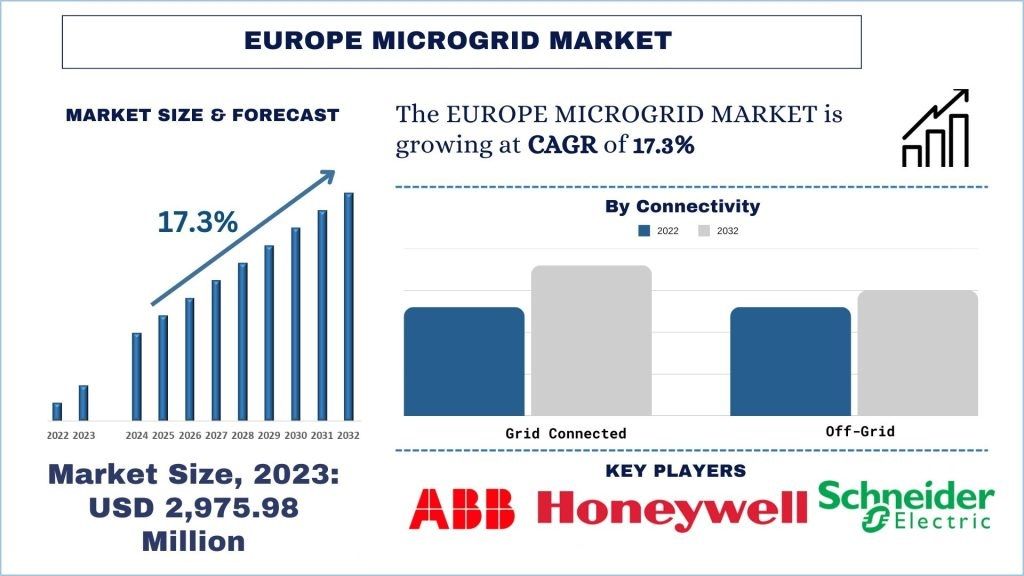
Dimensioni e previsioni del mercato delle microreti in Europa
Il mercato delle microreti in Europa è stato valutato a 2.975,98 milioni di dollari USA e si prevede che crescerà con un forte CAGR di circa il 17,3% durante il periodo di previsione (2024-2032) a causa della crescente domanda di energia pulita dalla regione e del crescente sostegno governativo all'adozione di microreti per fornire energia nelle aree rurali.
Analisi del mercato delle microreti in Europa
Il mercato delle microreti in Europa sta registrando progressi significativi nel periodo di previsione. La crescente necessità di aggiornare le infrastrutture obsolete e implementare l'elettricità off-grid sta guidando la domanda di installazione di microreti. Inoltre, l'attenzione del governo sull'energia rinnovabile e la crescente necessità di flessibilità nelle microreti, che possono essere collegate a varie fonti di energia come solare, gas naturale, idroelettrico, ecc., per la generazione di elettricità in Europa, stanno portando alla diffusione di microreti. Inoltre, i governi di paesi come Germania, Regno Unito e Francia stanno investendo in microreti per aumentare la percentuale di energia rinnovabile nel mix di generazione di energia e ridurre le emissioni di gas serra. Inoltre, il rapido passaggio ai veicoli elettrici in Europa ha aumentato le stazioni di ricarica per veicoli elettrici, molte delle quali utilizzano microreti. Si prevede che questa tendenza continuerà, riducendo ulteriormente la domanda di microreti. Ad esempio, nel 2023, la Zecca britannica ha lanciato un nuovo centro energetico multi-risorsa per microreti. La microrete multi-tecnologica comprende energia solare, eolica, cogenerazione e stoccaggio di batterie a doppia chimica. Inoltre, il rapido passaggio ai veicoli elettrici in Europa ha aumentato le stazioni di ricarica per veicoli elettrici, molte delle quali utilizzano microreti. Si prevede che questa tendenza continuerà, riducendo ulteriormente la domanda di microreti. Le microreti facilitano l'integrazione di tecnologie di energia rinnovabile, come l'energia solare ed eolica, nel mix energetico. Ciò è in linea con l'impegno dell'Europa a ridurre le emissioni di gas serra e a passare a un sistema energetico più sostenibile. Si prevede che questi fattori, combinati con gli investimenti in corso e le iniziative governative, continueranno a guidare la crescita del mercato delle microreti in Europa.
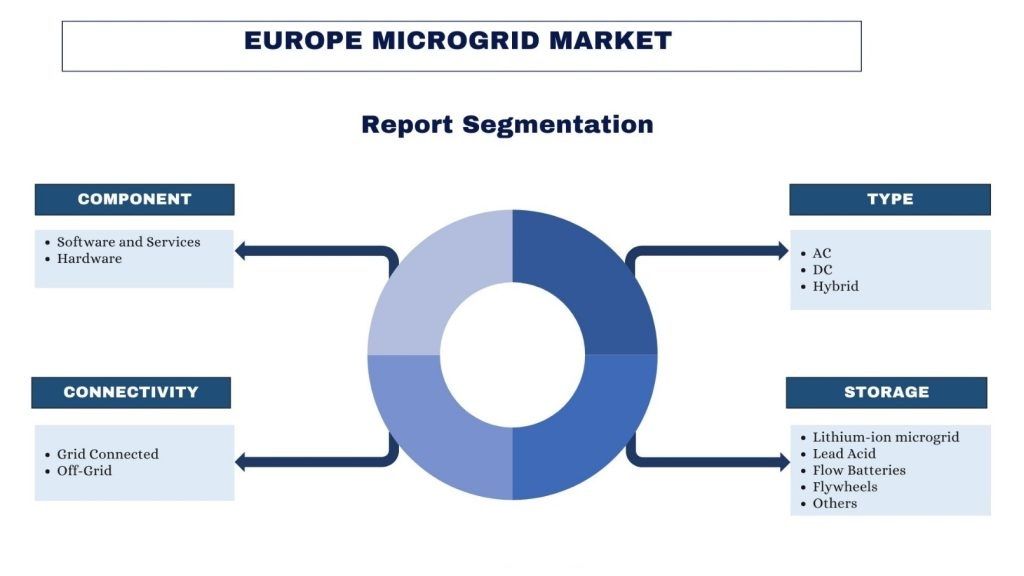
Tendenze del mercato delle microreti in Europa
Crescente sostegno governativo
La tendenza importante del sostegno governativo alle microreti in Europa, in particolare dopo il 2021, è uno sviluppo significativo volto a promuovere sistemi energetici resilienti e sostenibili. Le microreti sono sistemi energetici localizzati che possono operare indipendentemente dalla rete principale, integrando varie risorse energetiche distribuite come fonti di energia rinnovabile, sistemi di accumulo di energia e carichi controllabili. Offrono maggiore affidabilità, resilienza e potenziali risparmi sui costi riducendo la dipendenza dalla tradizionale rete centralizzata. Il sostegno governativo alle microreti sta guadagnando slancio in Europa, guidato da fattori quali la necessità di un'infrastruttura energetica affidabile e resiliente, la transizione verso fonti di energia più pulite e i potenziali vantaggi economici della produzione di energia locale.
- Pacchetto Energia pulita per tutti gli europei 1: Adottato nel 2019, questo pacchetto aiuta a decarbonizzare il sistema energetico dell'UE in linea con gli obiettivi del Green Deal europeo. Il pacchetto include 8 nuove leggi, tra cui la direttiva sulla prestazione energetica nell'edilizia e la direttiva sulle energie rinnovabili. Ogni paese dell'UE è tenuto a stabilire piani nazionali integrati per l'energia e il clima (PNIEC) decennali per il periodo 2021-30.
- Green Deal europeo e piano "Pronti per il 55%": lanciati rispettivamente nel 2020 e nel 2021, queste iniziative mirano a ridurre le emissioni di CO2 del 55% entro il 2030 (rispetto ai livelli del 1990) e a raggiungere emissioni nette pari a zero entro il 2050.
- Piano REPowerEU: annunciato all'inizio del 2022, questo piano ha introdotto misure per ridurre rapidamente la dipendenza dai combustibili fossili russi e accelerare la transizione verde.
L'Europa ha dominato il mercato delle microreti in Europa
Il mercato delle microreti in Europa è stato valutato a 2.975,98 milioni di dollari nel 2023 e si prevede che raggiungerà 11.722,83 milioni di dollari con un CAGR del 17,3%. La crescente necessità di aggiornare le infrastrutture obsolete e implementare l'elettricità off-grid sta guidando la domanda di installazione di microreti. Inoltre, l'attenzione del governo sull'energia rinnovabile e la crescente necessità di flessibilità nelle microreti, che possono essere collegate a varie fonti di energia come solare, gas naturale, idroelettrico, ecc., per la generazione di elettricità in Europa, stanno portando alla diffusione di microreti. Inoltre, i governi di paesi come Germania, Regno Unito, Francia e il resto d'Europa stanno investendo in microreti per aumentare la percentuale di energia rinnovabile nel mix di generazione di energia e ridurre le emissioni di gas serra. Di conseguenza, varie iniziative come il piano REPowerEU si basano sul pacchetto "Pronti per il 55%" e mirano ad anticipare gli sforzi di decarbonizzazione attraverso azioni di efficienza energetica e energia rinnovabile per eliminare gradualmente la dipendenza dai combustibili fossili russi. Pertanto, la Commissione ha proposto di aumentare l'obiettivo UE per le energie rinnovabili al 2030 al 45%, il che implica una sostanziale accelerazione nella diffusione delle fonti rinnovabili. Si prevede che tra il 2020 e il 2030 la quota di energia eolica e solare nelle capacità di produzione di energia installate nell'UE aumenterà dal 33% al 67%.
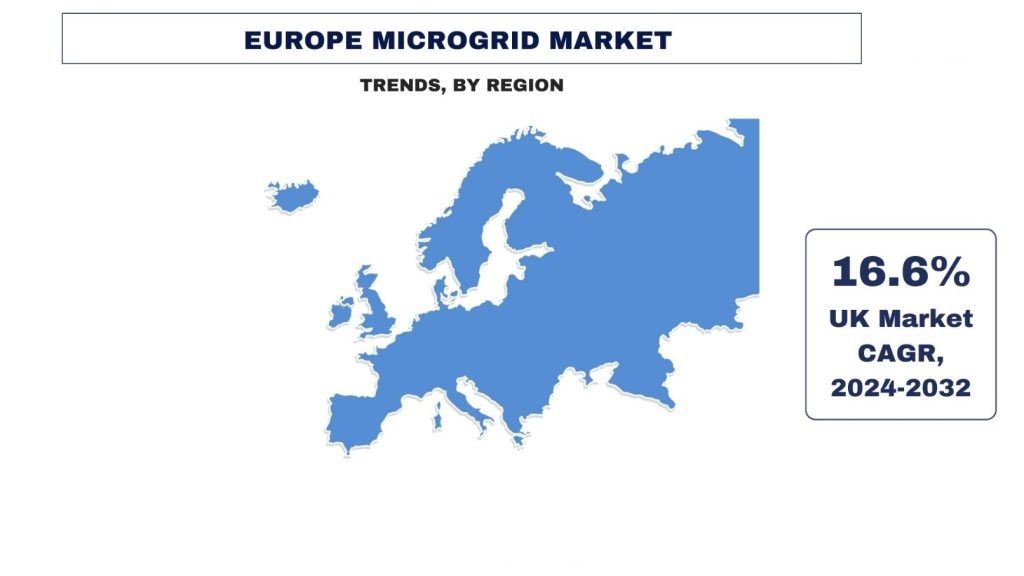
Panoramica del settore delle microreti in Europa
Il mercato delle microreti è competitivo e concentrato, con la presenza di pochissimi operatori di mercato europei e internazionali. I principali operatori stanno adottando diverse strategie di crescita per migliorare la loro presenza sul mercato, come partnership, accordi, collaborazioni, lanci di nuovi prodotti, espansioni geografiche e fusioni e acquisizioni. Alcuni dei principali operatori che operano nel mercato sono ABB, General Electric, Siemens AG, Eaton Corporation Inc., Schneider Electric SE, Honeywell International Inc., Caterpillar, Toshiba Corporation, Hitachi Energy Ltd e General Microgrids.
Copertura del rapporto di mercato sulle microreti in Europa
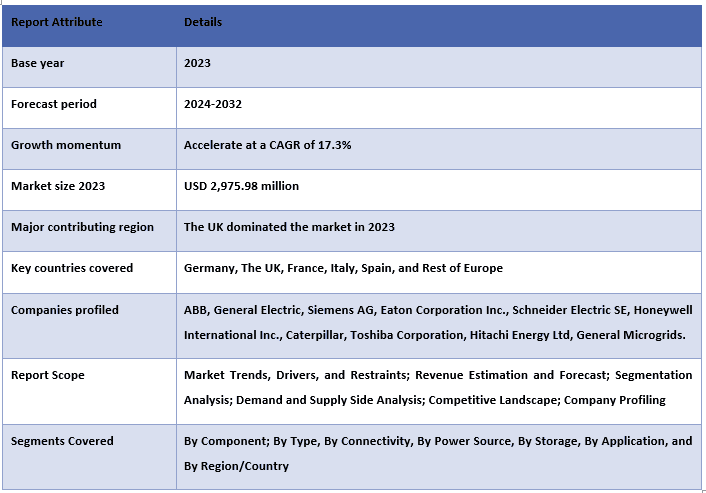
Motivi per acquistare questo rapporto:
- Lo studio include l'analisi delle dimensioni del mercato e delle previsioni convalidate da esperti chiave del settore autenticati.
- Il rapporto esamina brevemente la performance complessiva del settore a colpo d'occhio.
- Il rapporto copre un'analisi approfondita dei principali concorrenti del settore, concentrandosi principalmente sulle principali informazioni finanziarie aziendali, sui portafogli di prodotti, sulle strategie di espansione e sugli sviluppi recenti.
- Esame dettagliato dei fattori trainanti, dei vincoli, delle tendenze chiave e delle opportunità prevalenti nel settore.
- Lo studio copre in modo completo il mercato in diversi segmenti.
- Analisi approfondita a livello regionale del settore.
Opzioni di personalizzazione:
Il mercato delle microreti in Europa può essere ulteriormente personalizzato in base alle esigenze o a qualsiasi altro segmento di mercato. Inoltre, UMI comprende che potresti avere le tue esigenze aziendali; quindi, non esitare a contattarci per ottenere un rapporto che si adatti completamente alle tue esigenze.
Indice
Metodologia di ricerca per l'analisi del mercato delle microreti in Europa (2024-2032)
L'analisi del mercato storico, la stima del mercato attuale e la previsione del mercato futuro delle microreti in Europa sono stati i tre passaggi principali intrapresi per creare e analizzare l'adozione delle microreti nei principali paesi. È stata condotta un'esauriente ricerca secondaria per raccogliere i dati storici del mercato e stimare le dimensioni del mercato attuale. In secondo luogo, sono state prese in considerazione numerose scoperte e ipotesi per convalidare queste intuizioni. Inoltre, sono state condotte approfondite interviste primarie con esperti del settore lungo tutta la catena del valore del mercato delle microreti in Europa. Dopo l'assunzione e la convalida dei dati di mercato attraverso interviste primarie, abbiamo impiegato un approccio top-down/bottom-up per prevedere le dimensioni complete del mercato. Successivamente, sono stati adottati metodi di suddivisione del mercato e di triangolazione dei dati per stimare e analizzare le dimensioni del mercato dei segmenti e dei sottosegmenti del settore. La metodologia dettagliata è spiegata di seguito:
Analisi delle dimensioni storiche del mercato
Fase 1: Studio approfondito delle fonti secondarie:
È stato condotto uno studio secondario dettagliato per ottenere le dimensioni storiche del mercato delle microreti attraverso fonti interne aziendali come relazioni annuali e bilanci, presentazioni sulle prestazioni, comunicati stampa, ecc. e fonti esterne tra cui riviste, notizie e articoli, pubblicazioni governative, pubblicazioni della concorrenza, rapporti di settore, database di terze parti e altre pubblicazioni credibili.
Fase 2: Segmentazione del mercato:
Dopo aver ottenuto le dimensioni storiche del mercato delle microreti, abbiamo condotto un'analisi secondaria dettagliata per raccogliere informazioni storiche sul mercato e condividere diversi segmenti e sottosegmenti per le principali regioni. Il rapporto include i principali segmenti: componenti, connettività, tipo, fonte di energia, accumulo e applicazione. Ulteriori analisi a livello di paese sono state condotte per valutare l'adozione complessiva dei modelli di test in quella regione.
Fase 3: Analisi dei fattori:
Dopo aver acquisito le dimensioni storiche del mercato dei diversi segmenti e sottosegmenti, abbiamo condotto una dettagliata analisi dei fattori per stimare le dimensioni attuali del mercato delle microreti. Inoltre, abbiamo eseguito l'analisi dei fattori utilizzando variabili dipendenti e indipendenti come componenti, connettività, tipo, fonte di energia, accumulo e applicazione del mercato delle microreti. È stato condotto uno studio approfondito per gli scenari di domanda e offerta considerando le principali partnership, fusioni e acquisizioni, espansione aziendale e lanci di prodotti nel mercato delle microreti.
Stima e previsione delle dimensioni attuali del mercato
Dimensionamento attuale del mercato: sulla base di informazioni utili derivanti dai 3 passaggi precedenti, siamo giunti alle dimensioni attuali del mercato, ai principali attori del mercato delle microreti in Europa e alle quote di mercato dei segmenti. Tutte le suddivisioni percentuali richieste e le ripartizioni del mercato sono state determinate utilizzando l'approccio secondario di cui sopra e verificate attraverso interviste primarie.
Stima e previsione: per la stima e la previsione del mercato, sono stati assegnati pesi a diversi fattori, tra cui driver e tendenze, vincoli e opportunità disponibili per le parti interessate. Dopo aver analizzato questi fattori, sono state applicate le tecniche di previsione pertinenti, ovvero l'approccio top-down/bottom-up, per arrivare alla previsione di mercato per il 2032 per diversi segmenti e sottosegmenti nei principali mercati europei. La metodologia di ricerca adottata per stimare le dimensioni del mercato comprende:
- Le dimensioni del mercato del settore, in termini di ricavi (USD) e il tasso di adozione del mercato delle microreti nei principali mercati nazionali
- Tutte le quote percentuali, le suddivisioni e le ripartizioni dei segmenti e sottosegmenti di mercato
- I principali attori del mercato delle microreti in Europa in termini di prodotti offerti. Inoltre, le strategie di crescita adottate da questi attori per competere nel mercato in rapida crescita.
Convalida delle dimensioni e della quota di mercato
Ricerca primaria: sono state condotte interviste approfondite con i Key Opinion Leaders (KOL), inclusi i dirigenti di alto livello (CXO/VP, responsabile delle vendite, responsabile del marketing, responsabile operativo, responsabile regionale, responsabile nazionale, ecc.) nelle principali regioni. I risultati della ricerca primaria sono stati quindi riassunti ed è stata eseguita un'analisi statistica per dimostrare l'ipotesi dichiarata. L'input della ricerca primaria è stato consolidato con i risultati secondari, trasformando quindi le informazioni in informazioni utili.
Suddivisione dei partecipanti primari nelle diverse regioni
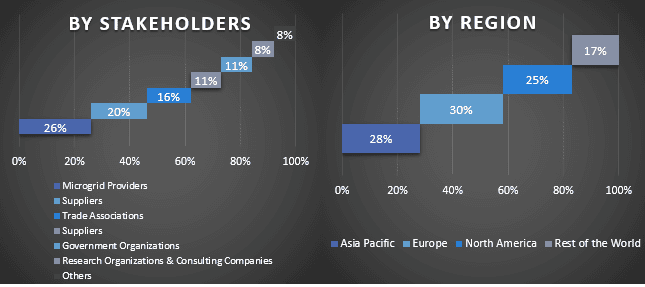
Ingegneria del mercato
La triangolazione dei dati è stata impiegata per completare la stima complessiva del mercato e arrivare a numeri statistici precisi per ogni segmento e sottosegmento del mercato delle microreti in Europa. I dati sono stati suddivisi in diversi segmenti e sottosegmenti dopo aver studiato vari parametri e tendenze nelle aree di componenti, connettività, tipo, fonte di energia, accumulo e applicazione nel mercato delle microreti in Europa.
L'obiettivo principale dello studio sul mercato delle microreti in Europa
Le tendenze attuali e future del mercato delle microreti in Europa sono state individuate nello studio. Gli investitori possono ottenere informazioni strategiche per basare la propria discrezione per gli investimenti sull'analisi qualitativa e quantitativa eseguita nello studio. Le tendenze di mercato attuali e future hanno determinato l'attrattiva complessiva del mercato a livello regionale, fornendo una piattaforma per il partecipante industriale per sfruttare il mercato non sfruttato per beneficiare di un vantaggio di pioniere. Altri obiettivi quantitativi degli studi includono:
- Analizzare le dimensioni del mercato attuali e previste del mercato delle microreti in termini di valore (USD) e le dimensioni del mercato attuali e previste dei diversi segmenti e sottosegmenti.
- I segmenti dello studio includono componenti, connettività, tipo, fonte di energia, accumulo e applicazione.
- Definire e analizzare il quadro normativo per la microrete
- Analizzare la catena del valore coinvolta con la presenza di vari intermediari, insieme all'analisi dei comportamenti dei clienti e della concorrenza del settore.
- Analizzare le dimensioni del mercato delle microreti attuali e previste per la regione principale.
- I principali paesi e regioni studiati nel rapporto includono Germania, Regno Unito, Francia, Italia, Spagna e il resto d'Europa.
- Profili aziendali del mercato delle microreti e le strategie di crescita adottate dagli operatori di mercato per sostenere il mercato in rapida crescita.
- Analisi approfondita a livello regionale del settore
Domande frequenti FAQ
D1: Qual è l'attuale dimensione del mercato e il potenziale di crescita del mercato europeo delle microreti?
Q2: Quali sono i fattori trainanti per la crescita del mercato delle microreti?
Q3: Quale segmento detiene la quota maggiore del mercato delle microreti per tipologia?
Q4: Quali sono le tecnologie emergenti e le tendenze nel mercato delle microreti?
D5: Quale paese dominerà il mercato delle microreti?
Correlati Report
I clienti che hanno acquistato questo articolo hanno acquistato anche






